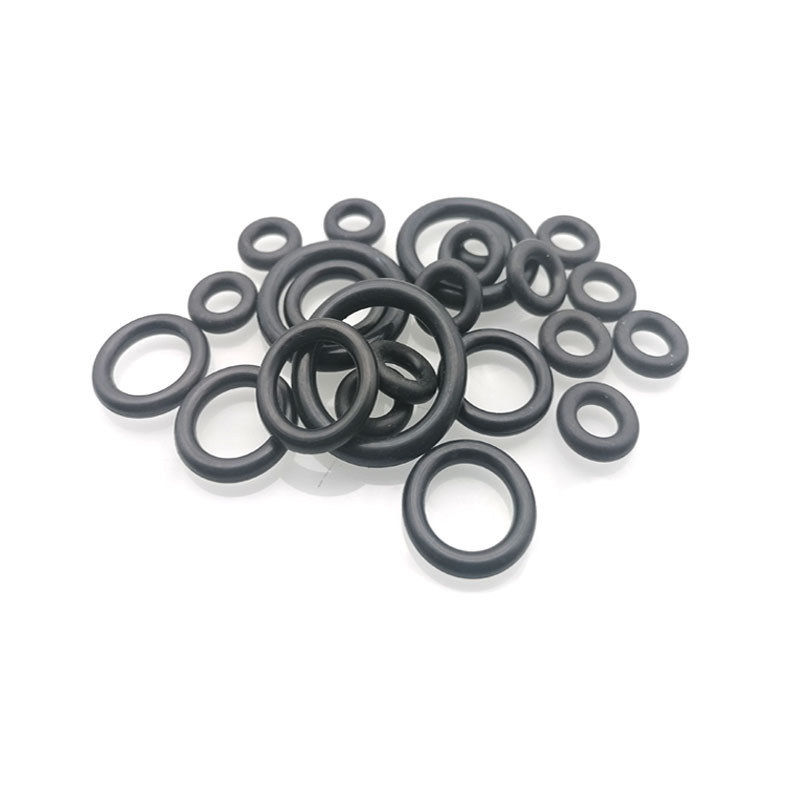Sealing Rings: Essential Components for Leak Prevention and Performance
2025-03-12
Sealing rings are one of the most crucial components used across various industries, from automotive and aerospace to plumbing and manufacturing. These simple yet effective devices are designed to prevent leaks, ensure proper sealing, and maintain the integrity of systems that rely on airtight or watertight enclosures. Whether used in engines, pipelines, or industrial machinery, sealing rings play a vital role in ensuring safety, efficiency, and reliability.
In this blog, we will explore the different types of sealing rings, their applications, and why they are an essential part of modern engineering.
What Are Sealing Rings?
A sealing ring, often referred to as an O-ring or gasket, is a mechanical component used to create a barrier between two mating surfaces. These rings are typically made from materials such as rubber, silicone, metal, or polymer, chosen based on their ability to withstand pressure, temperature, and chemical exposure. Sealing rings are placed in grooves between two surfaces to prevent the leakage of liquids, gases, or air. The design of the ring ensures that it fits snugly, creating an airtight or watertight seal that protects against unwanted escapes or intrusion.
Types of Sealing Rings
There are several types of sealing rings, each designed for specific applications. Below are some of the most common types:
1. O-Rings
O-rings are the most widely recognized and used type of sealing ring. They are circular in shape and fit into a groove, forming a seal when compressed between two surfaces. O-rings are used in a wide range of industries, including automotive, aerospace, and medical devices, due to their simple design and versatility. They come in various sizes and materials, such as nitrile, silicone, or fluorocarbon, to suit different applications.
2. V-Rings
V-rings are designed for dynamic applications where there is a need for continuous movement between the mating parts. They are often used in rotating or reciprocating sealing applications. The V-shaped profile creates an effective sealing solution that can handle both axial and radial loads. V-rings are commonly used in machinery, engines, and hydraulic systems.
3. Quad Rings
Quad rings are similar to O-rings but have a square cross-section. This design offers a higher sealing capability and reduces the chances of extrusion or deformation, making them ideal for high-pressure or high-temperature applications. They are frequently used in the aerospace, automotive, and oil and gas industries.
4. Gaskets
While not always considered a sealing "ring," gaskets are another form of sealing component often used in conjunction with sealing rings. Gaskets are typically flat and made from materials like rubber, cork, or metal. They are used to seal surfaces in pumps, valves, engines, and other machinery to prevent leaks. Gaskets are particularly useful in situations where sealing irregular or uneven surfaces is necessary.
5. Seal Rings for Hydraulic and Pneumatic Systems
Hydraulic and pneumatic systems often require sealing rings that can withstand high-pressure conditions. These rings are specifically designed to keep fluids or gases inside the system and prevent leakage. They are typically made from specialized materials like polyurethane, which provides high resistance to abrasion and pressure.
Applications of Sealing Rings
Sealing rings are used in a wide array of applications across multiple industries. Some of the most common applications include:
1. Automotive Industry
In the automotive sector, sealing rings are used in engines, fuel systems, transmission systems, and brake systems. They help maintain pressure, prevent oil and coolant leaks, and ensure that various automotive components function properly. O-rings are particularly important in engine components such as cylinder heads, pistons, and valve covers, where their ability to withstand high temperatures and pressures is critical.
2. Aerospace Industry
Aerospace systems require sealing rings that can perform reliably under extreme conditions, such as high altitudes and varying temperatures. Sealing rings in this industry are used in aircraft engines, fuel systems, hydraulic systems, and pressurization systems. These rings must be able to withstand vibrations, temperature fluctuations, and exposure to jet fuels and other chemicals.
3. Plumbing and Water Systems
Sealing rings are extensively used in plumbing applications, such as faucets, pipe joints, and shower heads. They are designed to prevent water from leaking at the connections between pipes, faucets, and other components. The ability to create a watertight seal is essential in plumbing systems to maintain efficiency and avoid water damage.
4. Industrial Machinery
In manufacturing and industrial settings, sealing rings are used in a wide variety of machinery, from pumps and compressors to turbines and valves. These rings prevent fluid leaks, protect against dust and contaminants, and ensure smooth operation. Sealing rings in machinery also reduce wear and tear on moving parts, which can help extend the lifespan of equipment.
5. Medical Devices
In the medical field, sealing rings are critical in devices such as IVs, syringes, dialysis machines, and respiratory equipment. These devices must maintain sterile conditions and prevent the escape of fluids or gases. Medical sealing rings are typically made from high-quality materials like silicone, which is biocompatible and resistant to chemical degradation.
Why Are Sealing Rings Important?
Sealing rings are important for several reasons:
1. Leak Prevention
The primary function of sealing rings is to prevent leaks. Whether it’s oil, gas, water, or air, sealing rings ensure that fluids or gases remain contained within the system, preventing environmental damage, safety hazards, and operational inefficiencies. In industries like automotive and aerospace, where leaks can have severe consequences, sealing rings play a critical role in maintaining safety.
2. Cost-Effective Solutions
Using high-quality sealing rings can prevent costly repairs and downtime caused by leaks and system failures. A well-designed sealing ring can extend the life of machinery, reduce maintenance costs, and improve system performance. In industries where equipment failure can lead to significant losses, having reliable seals is essential for maintaining smooth operations.
3. Efficiency and Performance
Sealing rings ensure that systems operate efficiently by preventing the loss of fluids or gases. This leads to better performance and energy savings, as well as reduced wear on components. In hydraulic and pneumatic systems, sealing rings are necessary to maintain pressure and ensure that the system runs at optimal capacity.
4. Safety
In industries like aerospace, automotive, and manufacturing, safety is a top priority. Sealing rings help prevent dangerous leaks and failures that could jeopardize the safety of workers, passengers, or the environment. By ensuring that systems are properly sealed, sealing rings contribute to the overall safety and reliability of complex systems.
Conclusion
Sealing rings may appear to be simple components, but they are integral to the safe and efficient operation of countless systems across a wide range of industries. From preventing leaks to ensuring high performance, sealing rings play a vital role in enhancing the reliability, safety, and efficiency of machines and equipment. Whether in automotive, aerospace, plumbing, or industrial machinery, sealing rings are essential for keeping systems running smoothly and minimizing the risks of leaks, contamination, and failure.
When selecting sealing rings, it is crucial to choose the right material and design to meet the specific requirements of your application. With the right sealing rings in place, you can ensure the long-term reliability and performance of your systems.



